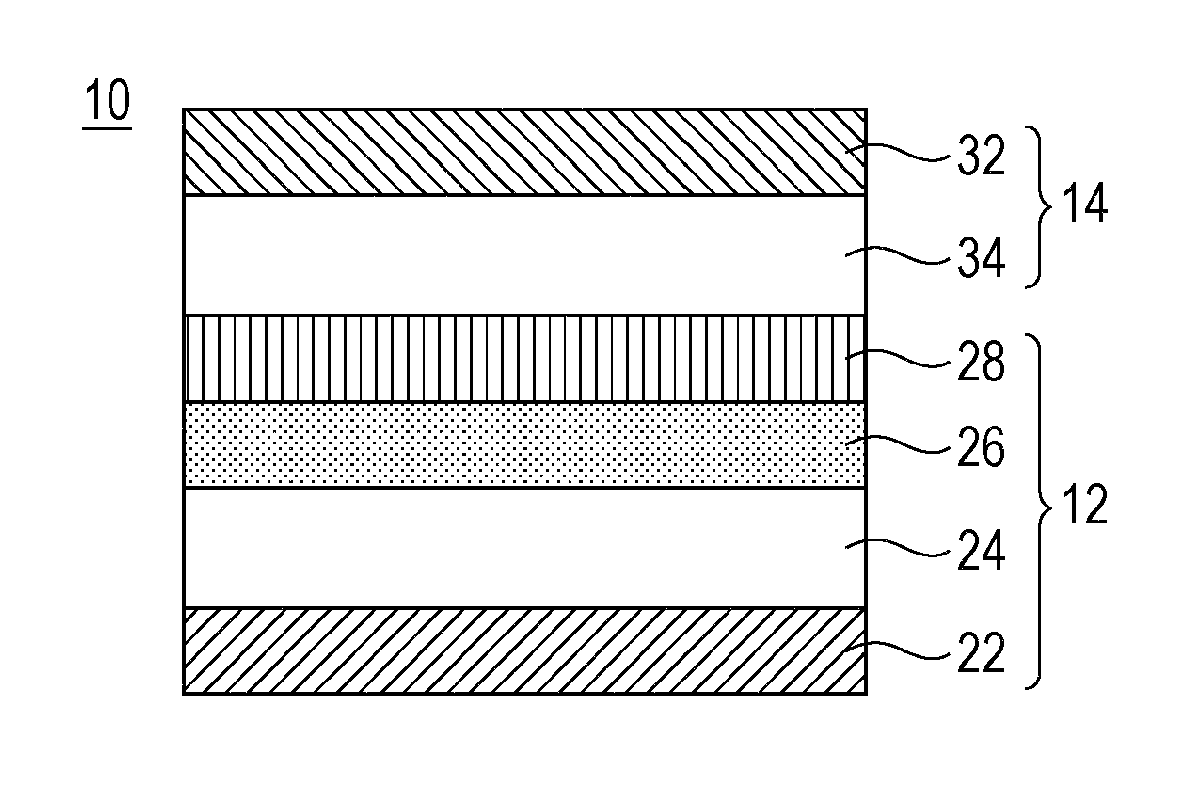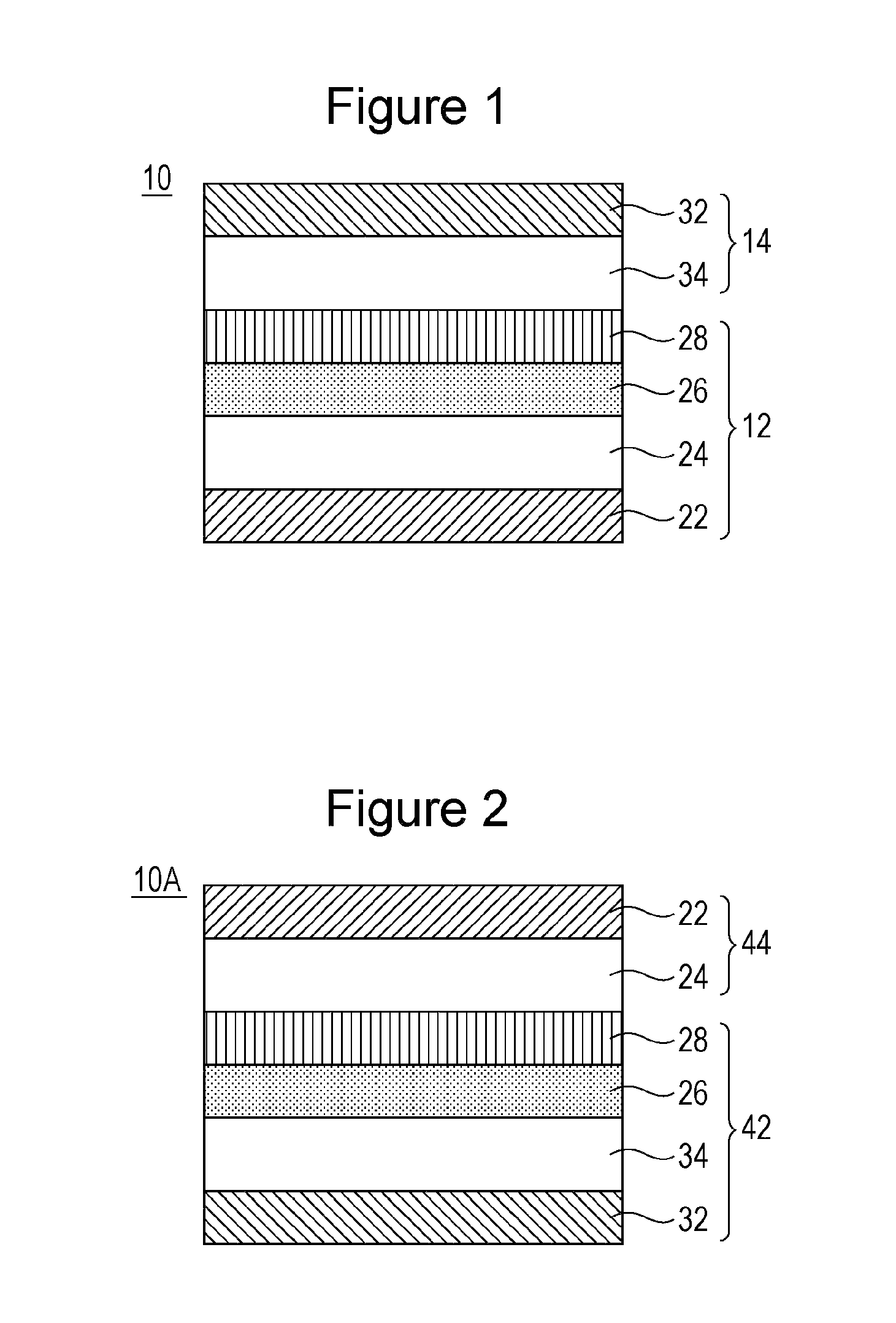Separator-integrated electrode and nonaqueous electrolyte secondary battery
a technology of nonaqueous electrolyte and integrated electrodes, which is applied in the direction of cell components, sustainable manufacturing/processing, and final product manufacturing, can solve the problems of reducing productivity, over-reach, and complicated manufacturing processes of nonaqueous electrolyte secondary batteries, so as to reduce the risk of short circuit and high reliability
- Summary
- Abstract
- Description
- Claims
- Application Information
AI Technical Summary
Benefits of technology
Problems solved by technology
Method used
Image
Examples
example 1
[0050]The fabrication of a nonaqueous electrolyte secondary battery of Example 1 will now be described.
Fabrication of Separator-Integrated Electrode
[0051]A separator-integrated electrode was fabricated as follows.
Formation of Positive Electrode
[0052]A positive active material slurry was prepared by weighing lithium cobaltate (LiCoO2) as a positive active material, acetylene black as a conductor, and polyvinylidene fluoride (PVdF) as a binder in a mass ratio of 95:2.5:2.5 and mixing them with N-methyl-2-pyrrolidone (NMP) as a dispersion medium. The positive active material slurry was applied to a surface of an aluminum foil as a positive current collector with a die coater and was dried to remove the organic solvent, i.e., NMP. The coated positive electrode was pressed to a predetermined thickness with a roller press and was cut to a predetermined size to obtain a positive electrode.
Formation of First Porous Layer
[0053]A titanium oxide dispersion slurry was prepared by weighing titan...
example 2
[0059]A nonaqueous electrolyte secondary battery of Example 2 was fabricated as in Example 1 except that a first porous layer having a thickness of 13 μm and a second porous layer having a thickness of 17 μm were formed in the fabrication of the separator-integrated electrode.
PUM
| Property | Measurement | Unit |
|---|---|---|
| particle sizes | aaaaa | aaaaa |
| thickness | aaaaa | aaaaa |
| diameters | aaaaa | aaaaa |
Abstract
Description
Claims
Application Information
 Login to View More
Login to View More - R&D
- Intellectual Property
- Life Sciences
- Materials
- Tech Scout
- Unparalleled Data Quality
- Higher Quality Content
- 60% Fewer Hallucinations
Browse by: Latest US Patents, China's latest patents, Technical Efficacy Thesaurus, Application Domain, Technology Topic, Popular Technical Reports.
© 2025 PatSnap. All rights reserved.Legal|Privacy policy|Modern Slavery Act Transparency Statement|Sitemap|About US| Contact US: help@patsnap.com


